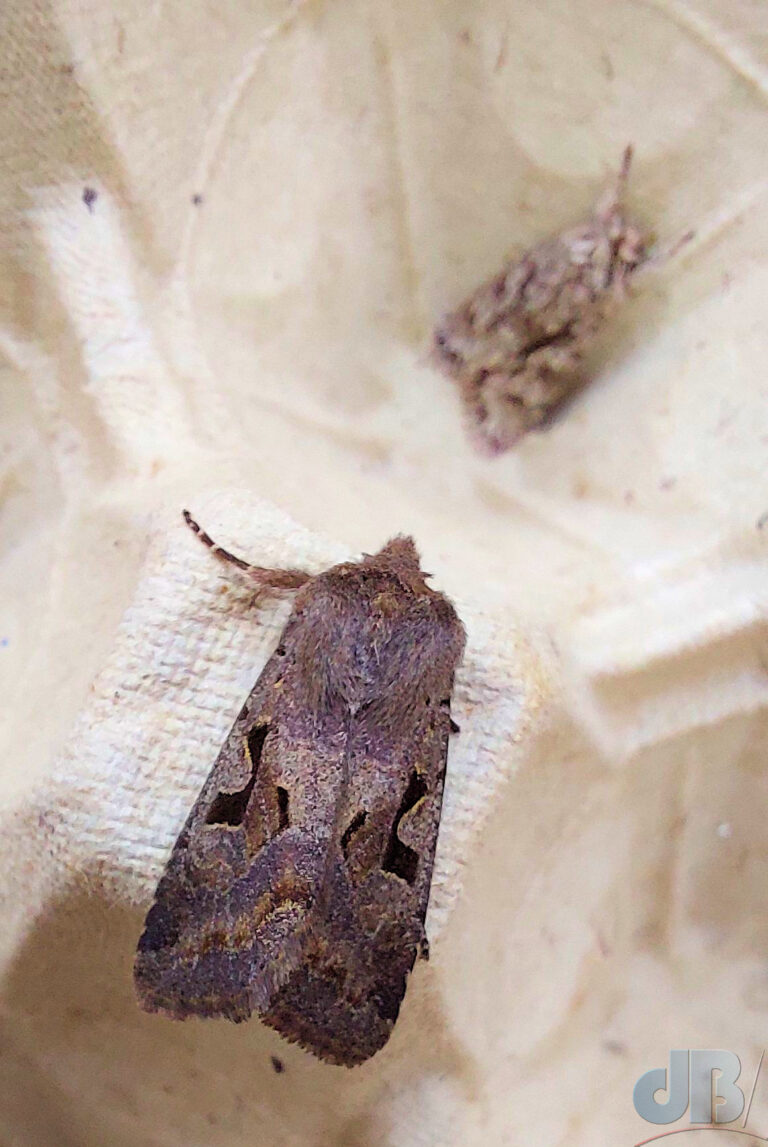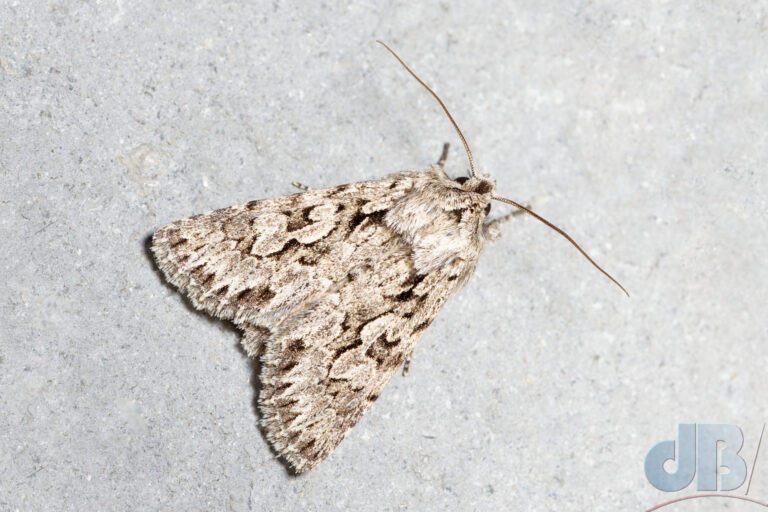TL:DR – Mothing is a simple, but educational and fascinating hobby. The data it accumulates can be useful scientifically.
I have lit up with a couple of different traps through the winter, but with generally disappointing results. There are not a lot of trees in our neighbourhood, which I suspect is the reason we don’t get a huge number of moths. That said, very few moth-ers see lots of moths in the gardens during the winter months.
15Watt Heath type, portable moth trap in place and ready for lighting up time
I put out my “spare” Heath trap last night. It is basically an ultraviolet fluorescent tube supported above funnel on top of a plastic box. The UV tube attracts nocturnal moths. They flap about a bit around the tube, perhaps bash into the vertical plastic vanes, and drop into the box. The box contains a load of cardboard egg cartons and the moths will generally secrete themselves among the hollows once they’re bored with chasing the light.
Come the morning, the diligent moth-er will be up at dawn to identify and count the moths trapped overnight, record the data ready to send off to the county moth recorder for scientific analysis along with records from others. The moths themselves are released off-site into bushes and undergrowth, preferably near dusk, and safely carry on with their lives.

The haul from the moth trap, if you could call it a haul, was the biggest and most diverse of the year so far. Four moths of three different species. A micro moth known as Diurnea fagella, which arrived about three weeks earlier than this in 2022, a second Hebrew Character, and the first Early Grey, two of them. At the height of summer, I expect to see a couple of hundred moths of 60 differents species on a lighting up night. But, it was just 7 Celsius overnight, that and other factors at play can keep numbers down until well into the spring it seems.

Now, you are perhaps wondering whether this is ethical or even worse cruel and there are definitely arguments for and against. But, what is definitely known is that we need to monitor the natural world to know anything about it with the aim of helping protect it, conserve, and restore. The moths are just one indicator of whether a location is environmentally healthy. They are often expert pollinators. They and their larvae also provide food for birds, frogs, and various other animals. They are themselves beautiful and fascinating creatures and deserve their place in the world just as any other living creature. I wrote on this issue about a year after I started mothing.
Oh, and if you were worrying about your woolen carpet and your three-piece suit, there are actually something like 1700 different species of moth in the UK, and just one or two of all those species actually have larvae that eat textiles.
Incidentally, it was some of the names that first drew me to mothing. The one I mentioned above, Hebrew Character is fascinating and closely related etymologically to the Setaceous Hebrew Character.